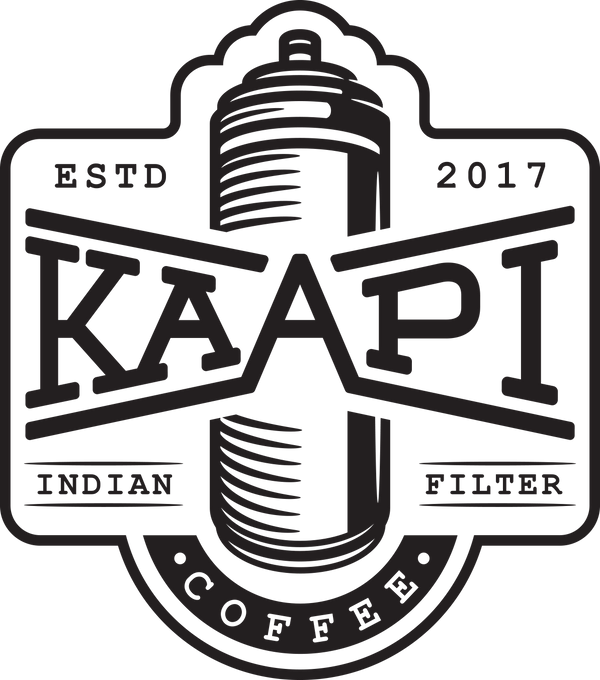Often dubbed the slow espresso drip filter by the coffee brewing community in the Western world, the Indian Filter Pot brewing is a sleeping giant considering how very few people know and can appreciate its power. A highly underrated brewing technique, which if mastered can rival even the most expensive espresso machines in the world to make a beautiful coffee.
The simplicity of brewing with an Indian filter pot cannot be understated. An all metal construction (we now custom make these filters in Food Grade stainless steel, yep the idea is to outlast generations of brewing!) No moving or exhaustible parts such as rubber gaskets or plastic. Just get coffee grounds (grind them if you get beans), hot water and let gravity do its magic. What's the catch?
A good majority may find the coffee extraction technique a tad challenging.
This detailed brew guide will help you brew your cuppa perfectly every single time.
[WATCH THE VIDEO FIRST, THEN READ ON]
https://youtube.com/shorts/Q-kyCxiR54E?si=IUKIdUpmsqenzGLb
WHAT YOU NEED TO BREW
- KAAPI grounds to brew or other coffee, ground fine to make Decoction (concentrate)
- Water
- Indian Filter Pot, comprising 2 chambers - part with filter holes (upper half) & part that collects coffee (lower half); plunger & lid.

- Scales (optional) - Check the TIPS & HACKS section.
- Water Kettle
BREWING STEPS
{the fail-proof technique}
- Assemble the upper & lower chambers one on top of the other.
- Add coffee grounds to the top chamber. Gently tap the assembly on the bench to level the grounds.
- Boil a fresh kettle of water.
- [First / Pilot Pour] Pour approx. 2 times the amount of grounds in this stage. e.g. for 20g of coffee grounds, use 40-50ml water [Technique] Hold the plunger slightly above the coffee bed and pour the water slowly in slow swirling motion. Holding the plunger like so helps break the fall water and disperses it evenly. Gently give the filter assembly a swirl and wait for 30s-1min. The larger the batch, the more it is recommended to wait before the 2nd pour in order to speed up the drip [Second Pour] pour the remaining water.
- Close the filter pot with lid and allow to stand.
- After approximately 10-20 minutes, the coffee collects as a thick syrupy decoction in the bottom chamber.
TIPS & HACKS
[#1] HOW MUCH COFFEE & WATER A coffee to water ratio of 1:5 works well for our CHAKRAM (coffee & chicory) blend. See TIP [#7] below for brewing pure coffee.- KAAPI Brass Filter 30g with 150ml water off boil = 90-100ml decoction
- KAAPI Stainless Steel Filter 35-40g (minimum) with 175-200ml water off boil. [Pilot Pour] 80ml, swirl filter pot gently, wait for 1-2 minutes [Second Pour] pour remaining 120ml water. Allow to stand to finish drip.
[#2] USE WATER OFF THE BOIL - wait for a minute after your kettle beeps, this brings the water down to about 94C.
[#3] TAP after adding ground coffee & SWIRL after water pour. It is essential to gently tap the filter pot on the counter a few times to even the coffee bed. THIS and A GENTLE SWIRL should be done after water pour to even the bed towards the end of the brewing cycle. This increases chances of evenly saturating the entire bed of coffee without creating dry pockets and channeling.
[#4] USE THE TAMPER SPARINGLY Notice, how we use the tamper ONLY to guide the pour. While traditionally, the purpose of the plunger is to level the coffee bed to slow down the coffee drip rate, we recommend NO tamping to light tamping because when brewing quantities larger than 35g of coffee at a time, it can considerably slow down the drip rate. Don't tamp too hard especially when using CHAKRAM (coffee & chicory) blend as it will choke the drip. Tamping the grounds should be ideally used only if the water is dripping through too quickly through the coffee bed.
[#5] BREAK YOUR POUR to speed up brewing. As a general rule of thumb, breaking pours is more essential only when brewing more than 35-40g of coffee at a time. If you are using a smaller filter that brews 20-30g of coffee or less at a time, you can do away with a single pour.
[#6] DON'T STIR the grounds after the pour a.k.a agitation (for those more familiar with aeropress). Since we are relying on gravity to drain the water through the coffee, it can easily seal the holes if you stir and can stop the dripping completely. GENTLY SWIRL instead as stated above.
[#7] BREWING PURE COFFEE If you are brewing a Decoction (concentrate) using the filter pot and using our pure coffee blends or other medium to lightly roasted coffees (without chicory), you may lightly TAMP - to slow down drip rate to extract more flavour use a tighter coffee grounds to water ratio. e.g. Brew 20g of coffee with 80-100ml water, to make a 50-60ml Decoction.
[#8] DECOCTION MIXING GUIDE How much decoction for a cup of coffee?
The design of the Indian filter pot has measurement guides built into it. Well, sort of!

If you follow the above level markers, an approx 1:7 coffee to water ratio is automatically maintained. This is a good starting point for beginners without using scales. To increase the decoction strength from this point on, all you do is increase the ground coffee, a little at a time, keeping the water (level) the same. However the time of extraction will increase accordingly.
[#10] BREW DECOCTION TO POUR OVERS As a manual brewing method, the filter pot gives you the freedom to brew different recipes with the opportunity to play around with grind sizes to brew different styles of coffees. We love to brew our light to medium roasted Single Origin coffees in a coffee to water ratio of 1:10-12 to make a western pour over style coffee.

